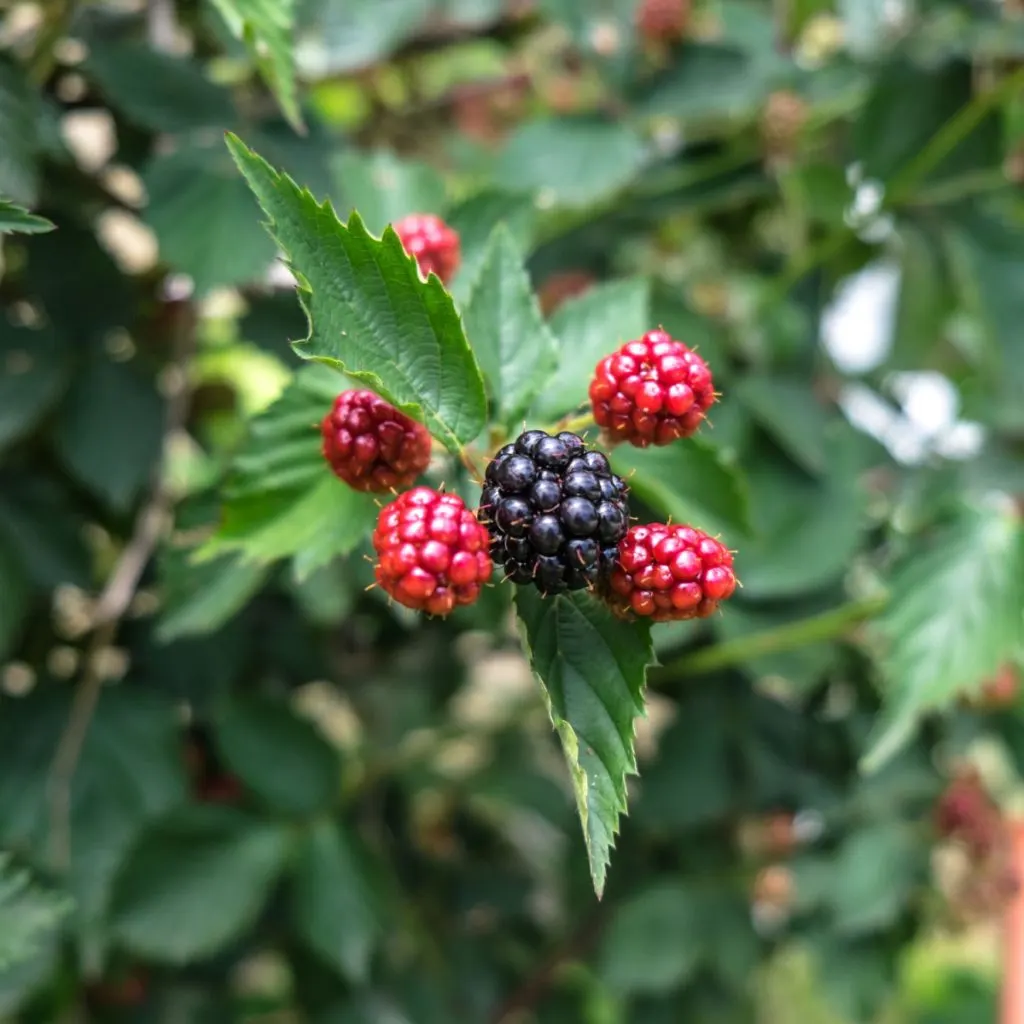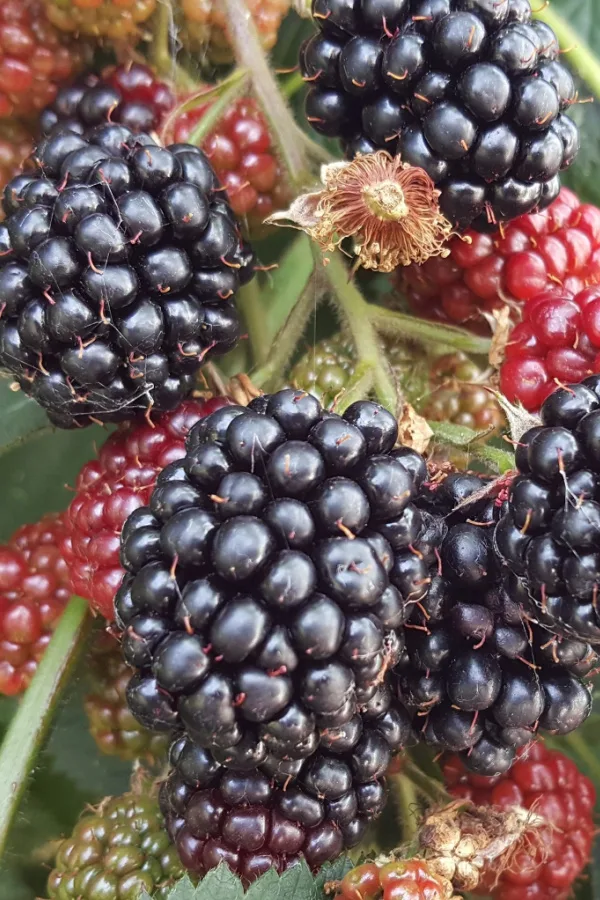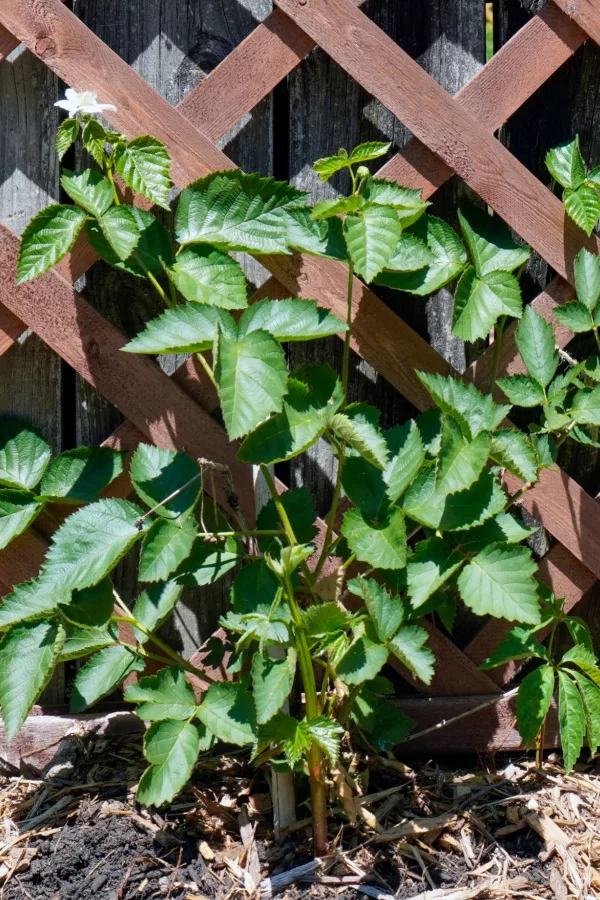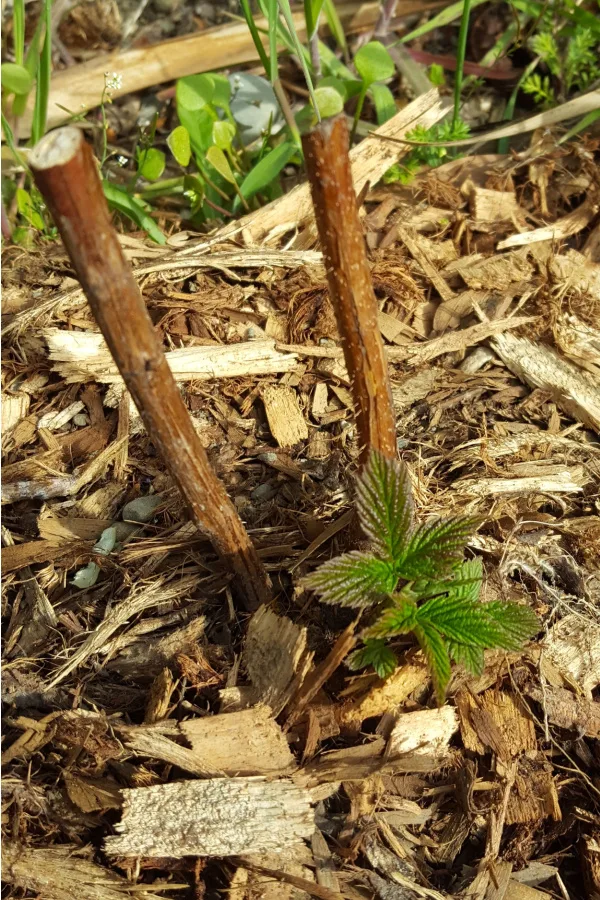If you are looking to plant and grow an amazing crop of blackberries but hate all of the scratches and cuts that result from their sharp thorns, then you need to try growing thornless blackberries. These plants have all the wonderful benefits of traditional blackberries – but without all the pain from piercing thorns!
Blackberries are one of the easiest perennial food crops to grow. Especially when you consider they can grow in almost any soil condition. In fact, you can often see wild blackberries growing unattended along fence lines and property boundaries without the slightest bit of attention or help.
Not only are blackberries cherished for their ease of growth and for being drought tolerant and pest resistant, but also for their bountiful, sweet-tasting harvests. One single blackberry plant can produce fruit for over 20 years or more – with little to no maintenance on your part once established.

Even better, all of delicious berries also happen to be packed full of antioxidants, vitamin C, vitamin K, and magnesium. And are they ever perfect for turning into jams or jellies, topping desserts, freezing – or simply as a healthy and delicious fresh snack.
But if there is one drawback to growing blackberries, it’s having to deal with the sharp thorns on their canes. Not just when picking, but when pruning and cutting back as well. But that is exactly where thornless blackberries can save the day!
How To Grow Thornless Blackberries
Types Of Thornless Blackberries To Grow
Most blackberries are grouped into two different categories: trailing or erect. Trailing blackberry plants can grow as large as 20 to 30 feet long and require some sort of trellising or fence support.
Erect blackberries grow to around 3 to 6 feet tall. They are excellent for smaller spaces and for growing in backyards. When it comes to thornless varieties, almost all fall into this more manageable category.
There are actually several different types of thornless blackberries on the market. And that wide variety makes it easy to select a type that grows well in your location and climate.

Local garden nurseries are often a great place to find varieties that work well with where you live. You can also find a wide variety available on line (see a few of our top affiliate links below). Just always be sure that the plants you select can work with your growing zone.
- Chester Thorness Blackberry Plant
- PrimeArk Freedom Thornless Blackberry Plants
- Triple Crown Thornless Blackberry Plants
Choosing The Right Location
Blackberries can grow in partial shade, but will have far better fruit production if they are located in full sun. And even though blackberry plants can grow in almost any soil condition, they prefer slightly acidic soil for best production.
For this reason, you don’t want to plant them in a location where the soil is super rich or full of organic matter. In addition, it’s best not to amend existing soil with soil additives. They simply are not needed and can actually reduce production.
More than anything else, the most important thing is to make sure the soil drains well. To improve drainage in heavy soils, adding a bit of sand to the soil will work wonders to allow better drainage.
Planting Tips – How To Grow Thornless Blackberries
The best time to plant thornless blackberries is the spring. This will allow them to root well and have a full season’s growth under their belt for great second year production levels.
Avoid planting in the summer as they can struggle to establish in high heat. You can blackberries in early fall, but if doing so, plant early on to allow the roots to establish before winter arrives. Again, spring is the ideal time for planting.
To plant, begin by digging your hole a few inches wider and deeper than the root ball. Remember that blackberries do not need a lot of power or energy from the soil so avoid the temptation of adding extra ingredients. If the soil is heavy, a little bit of sand is best to help with drainage.

Blackberries do well when you plant them on a slight mound. After placing the plant into the hole and back filling, ensure that the soil extends about 2 inches above the ground. This will help keep the crown out of standing water and prevents rotting.
Plant additional thornless blackberries about 1 to 2 feet apart. This will give the plants plenty of space to grow and expand without becoming too overcrowded. It will also allow for plenty of sunlight to reach plants to help ripen berries.
Mulching & Watering – Growing Amazing Thornless Blackberries
After planting, water well and add a two inch layer of compost mulch to help conserve moisture and keep weeds out. This is the one time and place where compost is good to use for blackberries. The compost will slowly leach a low dose of nutrients to plants over time. The plants will not need any additional nutrients beyond this.
Add an additional 3 to 4-inch layer of organic mulch (straw, grass clippings, etc.) on top of the compost. This will help to regulate the soil’s temperature as well as maintain moisture levels. This layer of mulch also helps even more to prevent weeds from growing around the base of the plants.
Water plants a couple of times each week until the plants are about 3 months old. After that time frame, established plants shouldn’t need additional watering unless there is a long period of drought. For more on mulching, see : The 3 Biggest Mistakes Made When Mulching Plants
Trellising & Annual Maintenance – How To Grow Thornless Blackberries
Thornless blackberry plants produce long straight branches called canes. Even though erect plants are on the shorter side, a trellises can still help to keep plants off the ground and reduce the chance of disease.

In addition, trellising also increases air circulation around plants as well as allows sunlight to reach all parts of the plant. Last but not least, trellising blackberries makes it far easier to harvest when the time comes.
There are many options when it comes to creating or using supports or trellises. You can use anything from an already established fence to a homemade support. Even a wire between two posts can help to support canes as they grow and fill out.
To make a homemade support, place a few posts at the ends of your growing rows. Then, wind some grapevine wire or heavy duty string between the posts. Place the wire or strings at 2 feet and 4 feet off the ground. As the canes grow, lightly tie them with a piece of rope or string to the support wire.
Pruning – Growing Thornless blackberries
Keep in mind that you likely will not see fruiting in the first year after planting. This is because blackberries only produce fruit on second-year canes. During the first year, the plant will focus its energy on producing new canes. It is vital not to prune any canes during the first year!

After year one, the first year canes will grow again and produce fruit. At the same time, brand new canes will start to grow which will then bear the fruit the following year. After the fruiting completes on the 2 year old canes, they can be pruned off. They will die off and not produce again.
If you remove the 2nd year canes right after picking, it makes it easy to tell which are first versus second year canes. As a good rule of thumb, second year canes will appear much darker. When pruning back, also take the time to remove any canes that have died or are damaged.
You can cut all thornless blackberry canes back to 3 feet tall after fruiting to keep the plants tidy and from growing out of control. Once thornless blackberries start producing their fruit, the only thing left for you to worry about is getting to them before the birds do!
Follow Our Facebook Page For Even More Great Tips! Simple Garden Life Facebook Page
Simple Garden Life is a website dedicated to keeping gardening fun, simple and enjoyable! We publish two new articles each week along with a new garden podcast episode every two weeks. This article may contain affiliate links.
